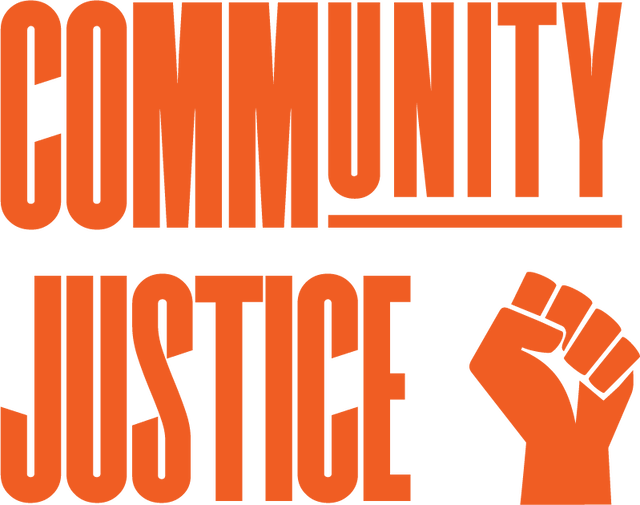Community Justice Unveils Media Accountability Project, Tracking Media Representations of Gun Violence inU.S. Neighborhoods
FOR IMMEDIATE RELEASE
May 7, 2024
Contact: CJAF@skdknick.com
WASHINGTON DC - Community Justice, in partnership with the Center for Neighborhood Engaged Research & Science (CORNERS) at Northwestern University’s Institute for Policy Research, released the initial findings from ongoing research that analyzes media representations of gun violence in the United States. The Media Accountability Project (MAP) is a first-of-its-kind analysis of the racial and geographical disparities in media coverage of gun violence in the United States. This pioneering research carefully examines the portrayal of gun violence incidents across different communities, with preliminary results revealing significant biases and stereotypes that contribute to a skewed public perception of gun violence and its victims.
The goal of the project is to determine the extent to which racial differences among the individuals and communities where gun violence occurs create real, measurable differences in the way that incidents are reported and ultimately viewed.
Researchers found the portrayal and descriptions of the individuals involved in gun violence varied substantially depending on where the incident occurred. Media accounts of gun violence in communities of color receive disproportionately less focus than events in majority white communities. Even though 63% of gun violence incidents occur in communities of color, an incident from a majority white neighborhood is 50% more likely to receive national attention than an incident from a community of color. Not only were there proportionally fewer incidents covered in communities of color, but they also disproportionately presented what happened rather than why the incident happened as was more commonly observed in incidents occurring in majority white neighborhoods.
The research team developed novel strategies to overcome the challenge of finding the pieces of coverage that correspond directly to incidents among all available news. They leveraged the vast metadata provided by the Gun Violence Archive to create a matching algorithm that accurately identified and collected almost 30,000 print and digital articles and around 12,000 TV news segments related to nearly 12,000 shooting events in the U.S. over the last four years. “This linkage,” Rob Voigt, Assistant Professor of Linguistics at Northwestern University and one of the study’s principal investigators, explains, “allowed us to not only characterize the demographics of the neighborhoods in which incidents described in media occurred, but also to find broad, linguistic patterns that hold even across incident characteristics such as whether it occurred at a school or was officer- or gang-involved. While still in its preliminary stages, this study marks a significant advancement in the field, underscoring the importance of nuanced analysis in shaping public discourse around gun violence.”
“These results showcase, in concrete numbers and analysis, what we have suspected for some time, the media’s portrayal of gun violence victims is inconsistent and perpetuates stereotypes. When gun violence happens in Black and Brown communities, the victims are seen as statistics. Coverage focuses on the crime as opposed to the humanity of the victims. Compared to coverage of gun violence in predominantly white suburban communities – extensive, and largely positive, reporting is done on the victims and their community,” said Amber Goodwin, Founder of Community Justice. “To move the nation to reduce gun violence, we must consider how we portray, frame, and visualize this violence from one community to the next. Journalists and editors have a responsibility to change how they cover gun violence in Black and brown communities, painting a more realistic portrait of the impact these deadly incidents have on communities.”
As the media deeply impacts how people view the world and the individuals perpetuating or victimized in violence, Community Justice commissioned this in-depth study to understand the biases present in reporting. The study is intended to open dialogue about how today’s newsrooms, journalists, and journalism programs might help to address the disparities found in the reporting of gun violence.
This report is a pivotal tool to shift media narratives on gun violence towards more equitable and accurate representations. The report illustrates the need for a balanced and people-centered approach to gun violence coverage. Additional key findings include:
Mass shootings and school shootings are dramatically more likely to receive national news coverage when they occur in majority white neighborhoods (59.4% of mass shootings and 55.2% of school shootings) than in communities of color (38.5% of mass shootings and 40.0% of school shootings).
Conversely, officer-involved shootings see more national coverage in communities of color (37.2% of incidents) than in majority-white areas (32.8% of incidents).
In TV news footage, concrete imagery related directly to an incident—such as images of crime scenes, lights and sirens, and live footage of the event—is significantly more likely to be used in association with incidents in communities of color (41.5% of incidents) than for those occurring in majority white neighborhoods (28.0% of incidents)
Coverage in majority-white neighborhoods tends to connect to broader policy impacts and discussions of mental health, with more complex and emotive language use.
Communities of color are disadvantaged by disparities in language use, with reporting on these communities including disproportionate mentions of police, gangs, and death; fewer quotations of involved parties; and more simple, concrete word use
Regional differences in coverage, with the Midwest media more frequently discussing race and policy implications, especially in cities like Detroit and Milwaukee.
Community Justice collaborated with researchers from the Center for Neighborhood Engaged Research & Science (CORNERS) to produce the report.
The report is available here.
###
Community Justice is a non-partisan project of Tides Center and builds power for communities of color to end gun violence.
